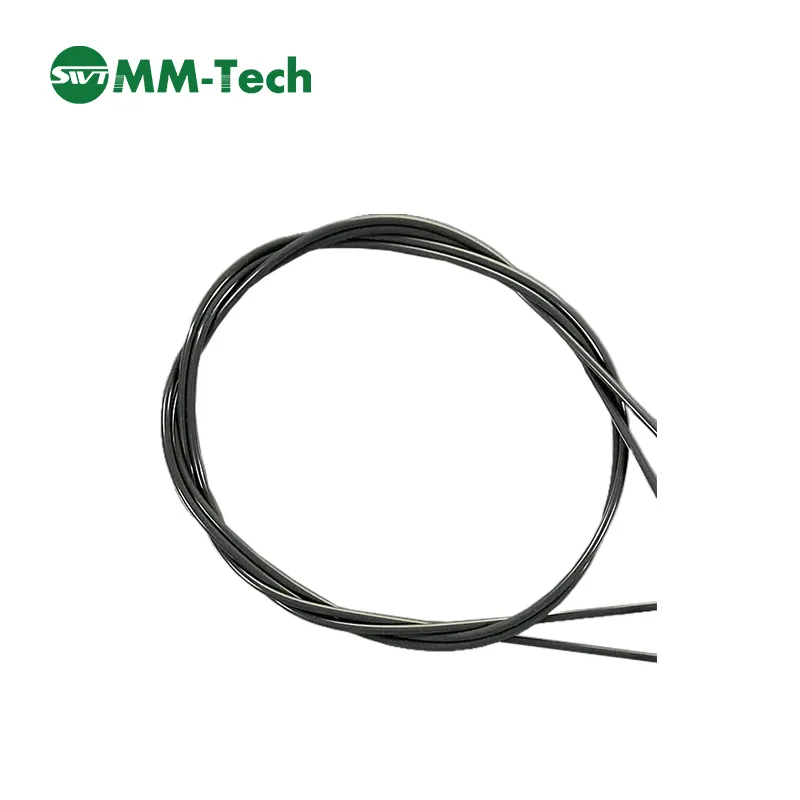As one of the most widely used plastics globally, Polyvinyl Chloride (PVC) has revolutionized manufacturing across industries. From construction to consumer goods, its unique properties make it an indispensable material. Central to its application is the PVC Welding Rod, a critical component in creating durable, seamless joints. This article delves into the features, advantages, technical specifications, and applications of PVC welding rods, while also highlighting the expertise of HEBEI MINGMAI TECHNOLOGY CO., LTD., a leading innovator in this field.

Understanding PVC and Its Applications
PVC, first synthesized in 1872, has evolved into a cornerstone of modern industry. Its chemical inertness and rigidity make it ideal for thermoforming, solvent bonding, and welding. Today, PVC exists in two primary forms: rigid/unplasticized uPVC and flexible PVC. The former is commonly used in construction for pipes and window frames, while the latter is favored in applications requiring elasticity, such as hoses and medical devices.
The versatility of PVC is further enhanced by its ability to be joined through welding. This process, which relies on PVC welding rods, ensures structural integrity and longevity. These rods are engineered to melt and fuse with PVC surfaces, creating strong, leak-proof connections. This makes them essential in industries ranging from plumbing to automotive manufacturing.
Key Features and Advantages of PVC Welding Rods
PVC welding rods are designed to meet the demands of diverse applications. Their primary advantages include:
- Chemical Resistance: PVC rods are resistant to corrosion and degradation, making them suitable for harsh environments.
- Thermal Stability: They maintain structural integrity under varying temperature conditions, ensuring reliable performance.
- Cost-Effectiveness: Compared to alternative materials, PVC welding rods offer a balance of affordability and durability.
- Ease of Use: The welding process is straightforward, reducing labor costs and time requirements.
Additionally, PVC welding rods are compatible with both rigid and flexible PVC, expanding their applicability. This adaptability is crucial for industries that require customized solutions, such as the production of industrial equipment and consumer goods.
Technical Specifications of PVC Welding Rods
While specific technical details may vary depending on the product, PVC welding rods typically adhere to industry standards for performance and safety. Below is a general overview of their specifications:
| Parameter | Specification |
|---|---|
| Material | Polyvinyl Chloride (PVC) |
| Form | Rigid (uPVC) or Flexible (PVC) |
| Melting Point | Approx. 100–150°C |
| Dimensions | Varies by application (e.g., 3mm, 4mm, 5mm diameters) |
| Chemical Resistance | Resistant to acids, bases, and solvents |
| Environmental Impact | Recyclable, though disposal requires adherence to local regulations |
For precise specifications, PVC welding rods from HEBEI MINGMAI TECHNOLOGY CO., LTD. are recommended to consult the product documentation or contact their technical team.
Applications of PVC Welding Rods
The utility of PVC welding rods spans multiple sectors. Key applications include:
- Construction: Joining PVC pipes, windows, and doors for leak-proof structures.
- Plumbing: Creating seamless connections in water and drainage systems.
- Industrial Manufacturing: Fabricating tanks, ducts, and equipment requiring chemical resistance.
- Consumer Goods: Producing items like toys, packaging, and furniture.
These rods are also critical in industry standards for safety and durability. For instance, the National Institute of Standards and Technology (NIST) emphasizes the importance of material compatibility and joint integrity in PVC systems. While the provided context highlights a search error, NIST’s guidelines on polymer materials underscore the role of welding techniques in ensuring long-term performance (NIST, 2023).
About HEBEI MINGMAI TECHNOLOGY CO., LTD.
As a leader in the production of PVC welding rods, HEBEI MINGMAI TECHNOLOGY CO., LTD. combines innovation with quality. With a focus on research and development, the company ensures its products meet global standards. Their commitment to sustainability and customer satisfaction has positioned them as a trusted partner for industries worldwide.
For more information about HEBEI MINGMAI TECHNOLOGY CO., LTD. and their PVC welding rods, visit their official website https://www.mmtechweld.com.
Conclusion
PVC welding rods exemplify the intersection of material science and industrial innovation. Their ability to create durable, chemical-resistant joints has made them indispensable in modern manufacturing. As HEBEI MINGMAI TECHNOLOGY CO., LTD. continues to advance this technology, the future of PVC applications looks promising. Whether in construction, plumbing, or consumer goods, these rods remain a testament to the enduring value of PVC.
References
National Institute of Standards and Technology (NIST). (2023). Standards for Polymer Materials. Retrieved from https://www.nist.gov.
MM-Tech, established in 2011, is a leading manufacturer of thermoplastic welding equipment in China.hot air plastic welder We specialize in the research, development, production, and sales of thermoplastic welding equipment.hot air welding gun Our product line is extremely rich, covering geomembrane welders, polymer hot air welders, tarpaulin hot air welders, hot air welders, hand extrusion welders, and various welding tools, comprehensively meeting the diverse needs of both on-site construction and workshop operations.hot air welder roofing Our products have been exported to over 100 countries and have won the trust of more than 3,000 customers.plastic welding heat gun|super blog